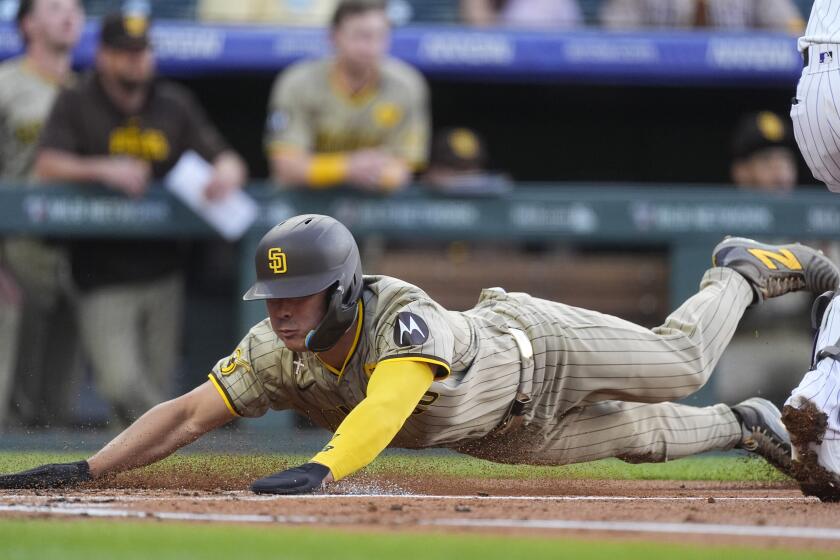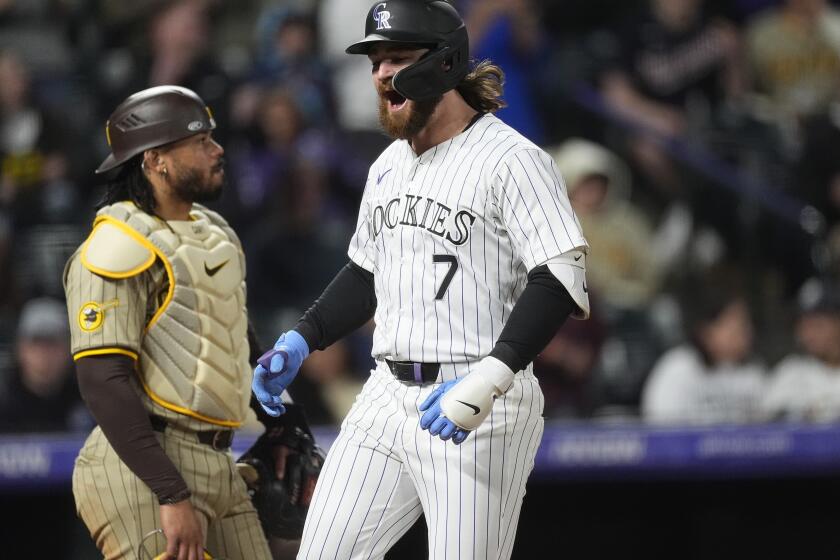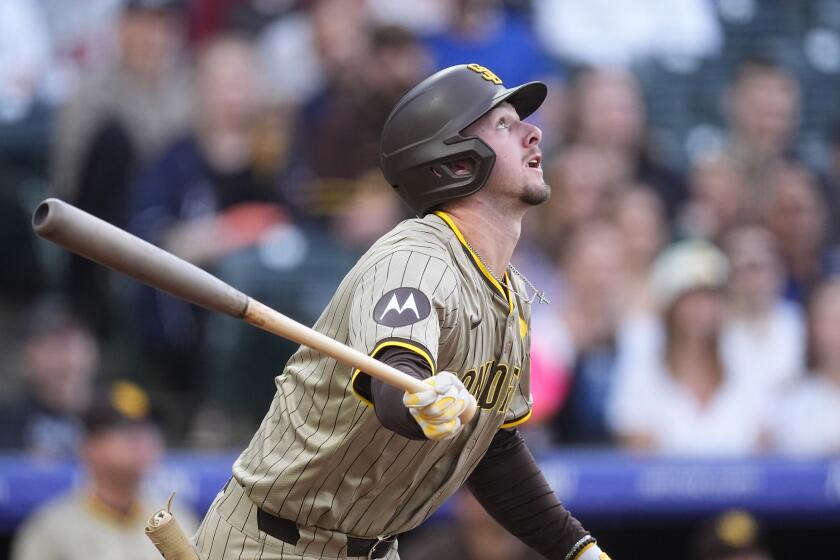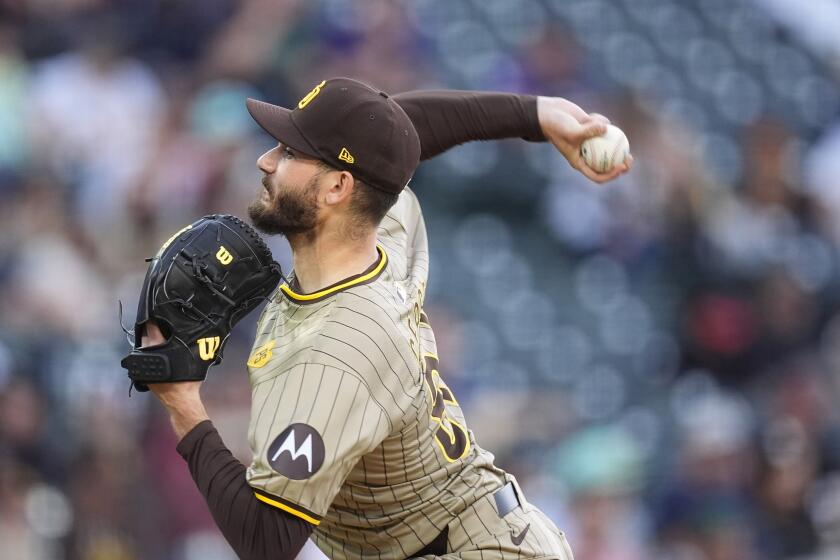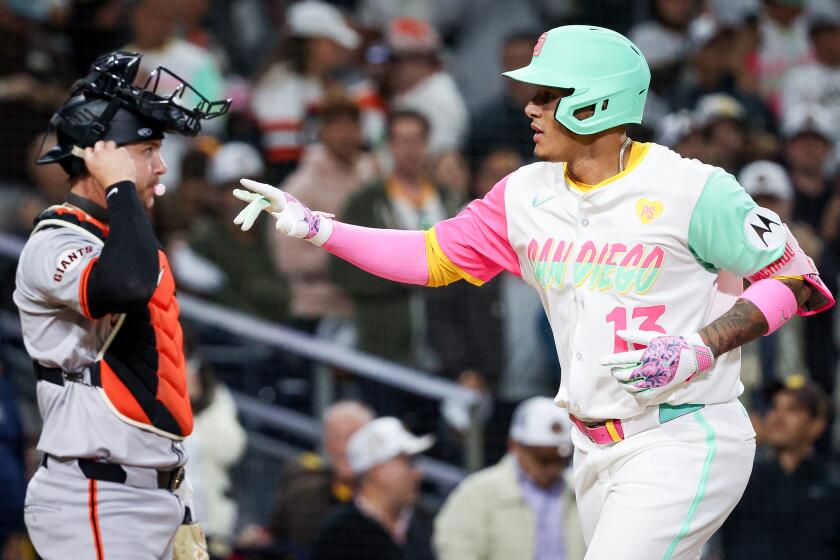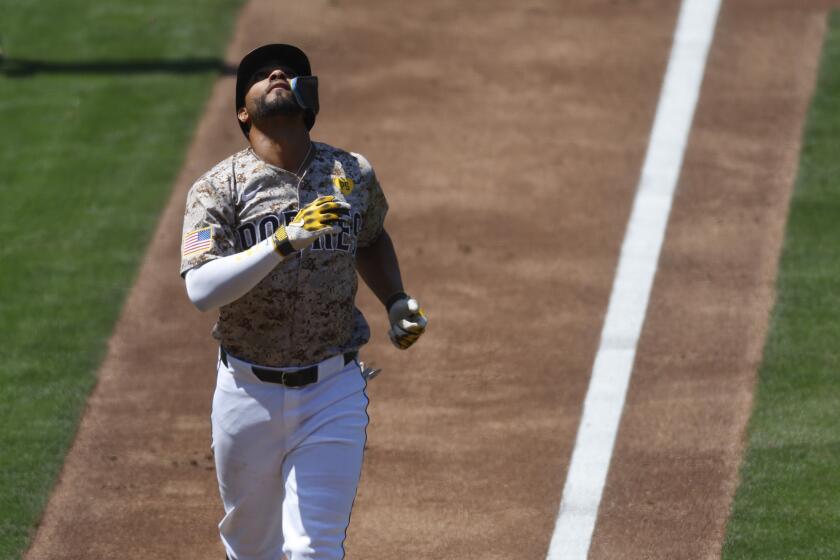Padres bullpen a product of its success through busy first month
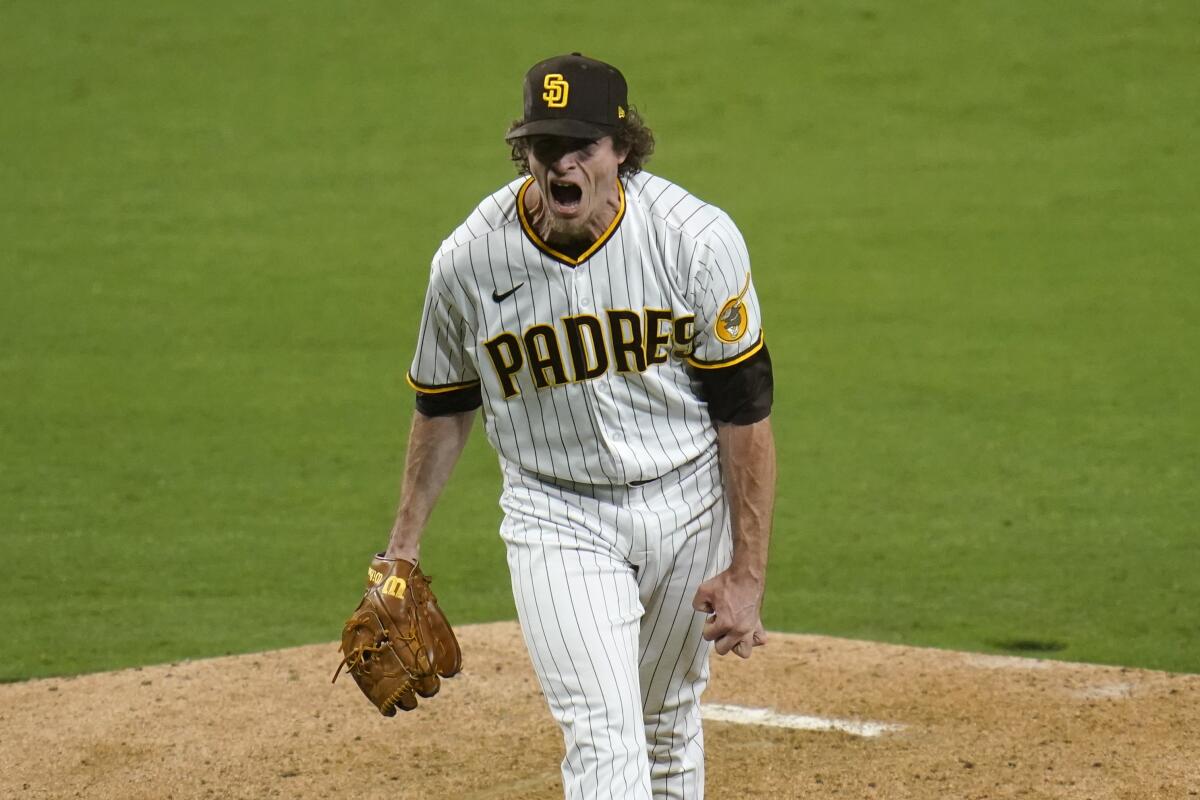
Relievers finishing innings they start has led to less wear and tear as bullpen carries heavy workload
Of all the plans a team’s architects make, of all the schedules a manager and coaches try to adhere to, those that involve the bullpen are the most tenuous.
Padres General Manager A.J Preller doesn’t even like to talk about relievers. When doing so Friday, bullpen coach Ben Fritz couldn’t help but mutter, “Knock on wood.”
Health and durability can be prioritized in theory. Then games happen.
The offense struggles, and almost every game is close in the later innings. The offense scores six runs in the final three innings to tie a game in which the starter went just three innings, and suddenly it takes 12 innings to win. The starting pitcher leaves after two-thirds of an inning because he’s hurt. The starter leaves after two-thirds of an inning because he isn’t getting outs.
All that — and more — happened to the Padres in the first 32 games of the season, as their bullpen entered the weekend having worked 141 1/3 innings (almost half the team’s total innings pitched and second in the majors to the Tampa Bay Rays) and been excellent doing it. Padres relievers’ collective ERA of 2.74 is fifth lowest in the majors.
On one hand, this isn’t a surprise.
“Coming in, we knew we had a really good bullpen,” said Craig Stammen, the dean of Padres relievers. “If you ask all of us, we expect to be pitching this good. Now, the pace we’re on, is it sustainable? We’ll find out. But when you’re rolling, you just keep on rolling.”
The Padres know their starting pitching has to begin consistently going deeper in games. They believe their offense will eventually score more than 3.8 runs a game, lessening the strain on the bullpen.
In the meantime, things really could not have gone much smoother, considering things have been anything but.
Basically, the bullpen’s success has been a self-perpetuating force.
Manager Jayce Tingler and his pitching coaches have made it a priority to try to keep relievers healthy. They go into each game committed to only using certain relievers, almost no matter the circumstance.
“They have done a great job of managing that,” closer Mark Melancon said.
The coaches monitor workload and effectiveness. They check with trainers. They talk to every reliever every day about how they feel, reading between the lines and deciphering body language as they do.
“It’s different for each guy,” Fritz said. “It’s understanding that guy. We want them to be as honest as possible, but you also want the guy who wants the ball every day. It’s a fine line for me. It’s the coach’s job to decipher what’s best for that guy.”
But perhaps the biggest reason the heavy workload and stressful innings in close games haven’t broken the Padres bullpen is that every reliever is, by and large, doing his job. Essentially, the bullpen’s execution is a product of its execution.
The hidden burden on a reliever is the times he is required to warm up and then not get in a game. While Tingler, pitching coach Larry Rothschild and Fritz have worked hard to limit those instances, they sometimes cannot be helped.
But Padres relievers have not had to do that very often. Their relievers are not entering a game and allowing successive baserunners, prompting action in the bullpen. They are coming in, throwing strikes and getting outs.
“When guys go in games there isn’t a worry of us having to bail them out very often,” Stammen said. “That takes a lot of stress off.”
Of the 94 times a Padres reliever has entered a game in place of another reliever, it has been at the beginning of an inning 84 times. Just 10 times has a reliever been pulled in the middle of an inning.
“They’re pitching well, so there are not as many moves,” Fritz said. “… It’s huge. Every throw you make in the bullpen counts, too. I know they’re not as stressful as game pitches, but when you are sore from pitching and you get up and make eight to 10 throws that ideally you don’t need to make, it’s impactful for the next day, for the next two days. The more guys are out there and close their own innings, the easier it is on the rest of the guys.”
The rule requiring a pitcher to face at least three batters, which is now in its second season, has cut down on pitching changes. But Padres relievers’ success against batters from both sides of the plate has allowed Tingler to stick with pitchers longer as well.
“The combination has definitely limited how many times we’re warming up,” Stammen said of the three-batter minimum and the relievers’ overall effectiveness.
For the Padres to be 12-0 when leading after six innings and 15-0 when leading after seven and 17-0 when leading after eight, it takes a collective effort by the individuals involved.
“It’s the sum of all the parts,” Stammen said. “When all the parts are working together and every pitcher is able to do their role, that is what makes us able to do what we’re doing.”
That is something Preller planned — to stack the bullpen with quality arms and have them compete with each other.
That is pretty much what has happened so far.
“You’re just trying to keep up with the next guy,” left-hander Tim Hill said. “Everybody in there is really good. … Every day you’re like, ‘Man I’ve got to keep up.’ That elevates the play. We’re just trying to one-up each other.”
Go deeper inside the Padres
Get our free Padres Daily newsletter, free to your inbox every day of the season.
You may occasionally receive promotional content from the San Diego Union-Tribune.

